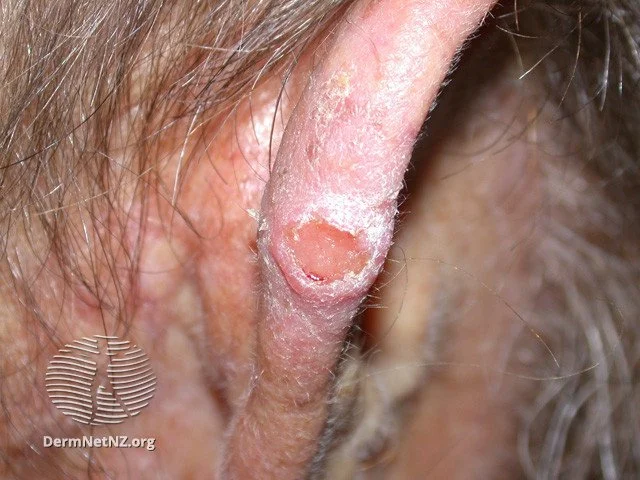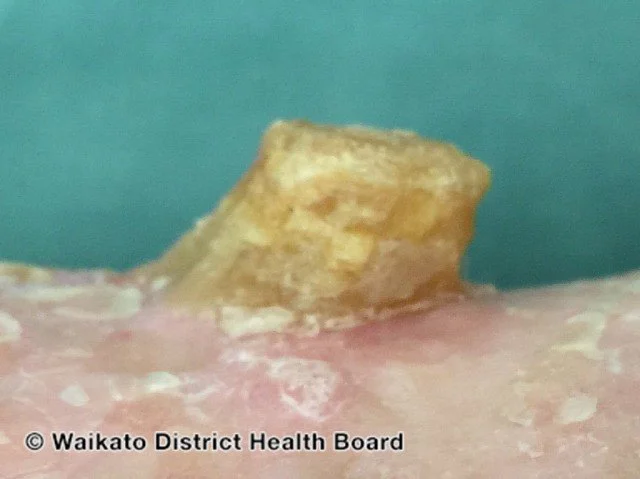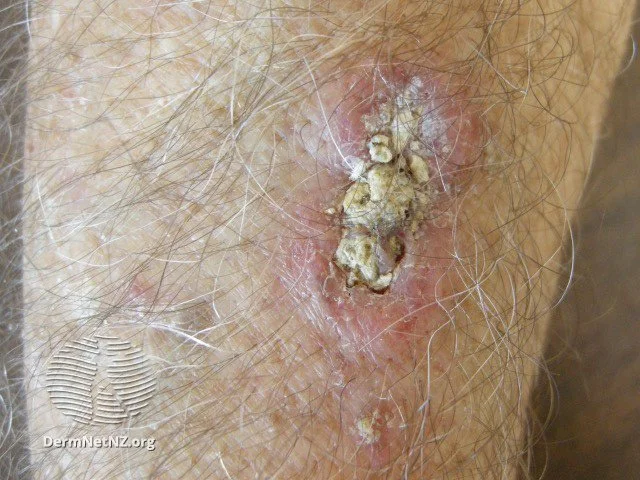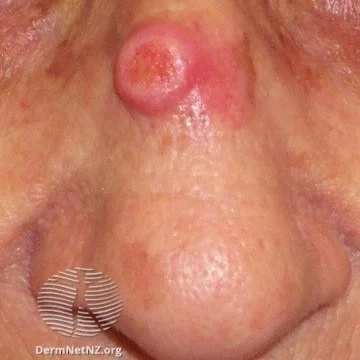
Squamous Cell Carcinoma: Symptoms and Treatment
Squamous cell carcinoma, which can show as a nonhealing sore or ulcer on the skin.
Credit: DermNet NZ
What is squamous cell carcinoma?
Squamous cell carcinoma (SCC) of the skin is a prevalent skin cancer characterized by the uncontrolled proliferation of squamous cells, which are responsible for producing the protein keratin. Typically manifesting as a firm bump or an ulcerated region, SCC is frequently linked to prolonged sun or tanning bed exposure. It predominantly appears on areas most exposed to the sun, such as the face, head, ears, and neck, but can arise elsewhere. Early detection is crucial, as it occasionally metastasizes.
What causes squamous cell carcinoma?
The primary trigger for SCC is the accumulation of mutations within squamous cells. Predominantly, these mutations arise from:
UV radiation damage
Cigarette smoking
Aging
Immune suppression
Risk Factors:
Fair complexion
Presence of actinic keratoses (pre-cancerous skin lesions)
History of sunburn episodes
Habitual sun or tanning bed exposure
Prior diagnosis of skin cancer
What are the symptoms of squamous cell carcinoma?
The hallmarks of SCC are crusted or scaly lumps, which might ulcerate. They predominantly surface in areas exposed to the sun. Key indicators include:
Progressive growth spanning weeks to months
Sensitivity or pain
Red, scaly patches
Typical locations: face, lips, ears, hands, forearms, and shins
Variable size, from a few millimeters to multiple centimeters
How do I treat squamous cell carcinoma?
Surgical intervention is the primary approach for SCC. Typically, the lesion is excised with a safety margin to ensure comprehensive removal. Alternative treatments encompass:
Shave excision, cryotherapy, or electrocautery: Suitable for small, low-risk tumors.
Topical chemotherapy: Employing agents like fluorouracil or imiquimod for early-stage lesions.
Mohs micrographic surgery: Chosen for facial lesions or recurring tumors, ensuring minimal tissue loss with maximum cancer clearance.
Radiotherapy: An option when surgery isn't feasible.
Chemotherapy injections: Using methotrexate, for cases where surgery isn't suitable.
How do I prevent squamous cell carcinoma?
SCC prevention primarily hinges on minimizing sun or tanning bed exposure. Protective measures include sunscreen application, donning hats, and using UV-protective clothing. Regular skin examinations facilitate early detection and prompt treatment. Additionally, oral vitamin B3 or acitretin might reduce SCC risk in individuals with a heightened susceptibility.
Early detection and treatment of squamous cell carcinoma are vital for successful outcomes. If you have concerns about skin changes or need a skin cancer screening, consider reaching out to Rixis Dermatology for expert care.
A cutaneous horn, which is a warty growth, can sometimes have an underlying squamous cell carcinoma associated with it.
Credit: DermNet NZ
Squamous cell carcinomas are often very crusty due to rapid cell growth.
Credit: DermNet NZ
Squamous cell carcinomas can grow rapidly if not treated.
Credit: DermNet NZ




